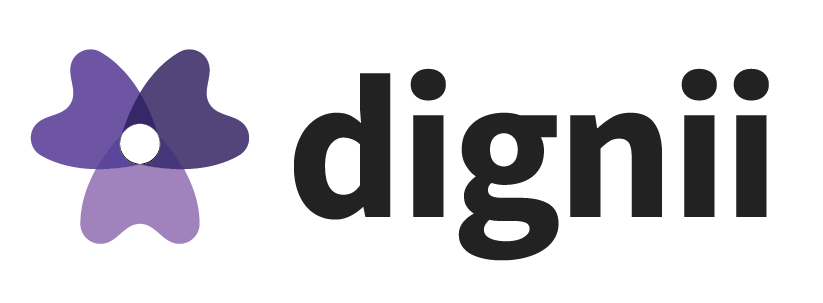
Unconscious Bias in a Post COVID19 World
Introduction: Why now?
I have been educating and training people on Unconscious Bias for nearly a decade: this is not a new conversation. I drafted this paper on Unconscious Bias prior to the murder of George Floyd. While racism and police brutality are by no means new topics, that particular incident drew a line in the sand for a lot of people. I’ve noticed two significant shifts: It has brought a much-needed spotlight on the racism and systemic racism experienced by POC around the world; and, made even the strongest of allies think twice as they try to find the right ways to demonstrate support for a community in need. Clients and friends are asking me to proofread blogs, memos and Facebook posts. Since March of this year, the demand for anti-racism has increased dramatically as it’s taken centre stage in the media thanks to significant protests in the US and around the world. Education on Unconscious Bias is more important and relevant than ever.
Current events: COVID-19 and racism
COVID-19 has brought elements of racism and systemic racism to the forefront. For example:
- COVID-19 has disproportionately affected the black community and other minorities,
- Incidents of racial discrimination towards the Asian community have increased, similar to those seen during the SARS outbreak.
The challenges this place on individuals, employees, and our culture is like nothing we’ve seen in our lives. The impact of the pandemic has affected almost all elements of our daily personal and professional lives. The protests following the murder of George Floyd have been seen around the world, highlighting the systemic racism that perpetuates these crimes and allows them to largely go unpunished. However, we are starting to see some discussion and actions from leaders. While the necessary change isn’t going to happen overnight, we can absolutely say that the momentum has increased.
Changing course
What we need now is a way forward, and in order to find that, we need to first unpack our understanding of racism. In this article I will explore how unconscious and implicit biases can result in racial discrimination, and how we can manage those biases. I am also going to discuss allyship, and actions we can take to create the change we need to see. Taking my cue from Dr Bonnie Henry, I would like to approach this topic with kindness and compassion.
In challenging times, I find it helpful to look back on history to see how we’ve coped in the face of tragedy. As a white woman I am able to access privilege solely on the colour of my skin. As a lesbian, I share the experience of “otherness” with many different minorities. While the lived experiences of being black or being gay are not the same, I have an understanding of what it is like to live as someone who is not “centred” in our society, or not fitting in with a prescribed way of being. It’s with this understanding I’ve been reflecting on the Stonewall Riots which took place over 5 days in 1969, and are credited with being one of the most important events leading up to the gay liberation movement and our modern fight for LGBTQ+ rights – a movement that has directly affected me and my family. While the media coverage of the protests and discrimination can be hard to digest, I am slightly comforted by the idea that movements are messy – but in the past they have gotten us what we need.
What is unconscious bias?
Exploring unconscious bias is a great starting point for learning and understanding the biases we have and how they impact racial discrimination.
So what is it? Unconscious bias is an inclination or preference formed without reasonable justification that can prevent judgment from being balanced or even-handed. It tends to result in prejudice in favor or against a person or group. Research suggests bias cannot be eliminated, but it can be managed.
Ways to manage unconscious bias
The first thing we need to do to manage unconscious bias is to recognize and accept that we all have biases. The key is to learn to manage them. There are a variety of different ways we can do this; the two most important areas of focus are: research, and sources of information. It may seem like these two are one in the same, but they are not.
In this context, research means to study different topics to broaden our understanding of the systems that exist around us. For example, research shows us that studying privilege systems can strengthen our compassion. Research also extends to understanding our own experiences which is further discussed in allyship, below.
We are constantly influenced by different sources of information: parents, friends, community, teachers, media, social media, etc. Examining, and importantly, broadening our sources of information should be considered key in managing bias. Of course, it’s unrealistic to think that we can consume all sources of information, so this is where our critical thinking skills come into play. When reviewing sources of information go through the following actions:
- Observe
- Reflect
- Evaluate
- Analyze
You may notice that I have deliberately refrained from listing any actions that require conclusions to be drawn. This is because now is not the time for answers, it’s the time to listen and learn. Meaningful conclusions will naturally follow.
Research has shown that one of the best ways to curb bias is to use data, especially to use data to hold people accountable. This is a major part of what we do at Dignii.
Consider using data to measure diversity and disparities – we do it for most everything else. Businesses do not simply say “oh I feel like sales are great this quarter” – They look to the data! The same can, and should be applied to diversity and inclusion. Research shows us that using data helps to prevent unintended discrimination by measuring disparities, is helpful in managing bias. Data also gives you a way to measure the change you want to see in the workplace.
Allyship
Now is a GREAT time to call on allies. Allyship can mean something different to everyone, depending on your relationship to the issue at hand.
An ally is someone who is willing to take action in support of another person to remove barriers that person faces, either in the workplace or community. Allyship should be considered a lifelong process. Rather than a one off gesture, it is a process – a coming together of people to build relationships based on trust, accountability and consistency. It does not mean to centre yourself in the issue. Sometimes it means something as simple as just listening.
Listen to other’s stories. Empathy is powerful.
Ways to demonstrate Allyship
Our sense of community can help guide what our allyship looks like as it relates to awareness, exploration, listening and learning.
Awareness
Awareness is key to understanding the stereotypes and bias you may have – including internally – for example, think of the ‘model minority myth’ (stereotype based on the narrative that Asian Canadian/USA kids are “whiz kids”, good at music, Tiger Moms, and so on).
One of the significant problems with this stereotype is that it erases the differences among individuals and becomes a barrier to racial justice. It’s often used to downplay the impact of racial discrimination, and pits minorities against each other, creating a hierarchy of minorities. It is imperative to challenge this stereotype by understanding that while the collective is important, individual differences still exist. We can then highlight those differences and celebrate them.
Recently there has been discussion of ‘virtue signalling’ on social media. Virtue signalling is the popular modern habit of indicating that one has virtue merely by expressing disgust or favour for certain political ideas or cultural happenings. It gives the user a sense of being morally superior. Ideally, we should beware of virtue signalling, and if you must do something performative, particularly on social media, link to real action (e.g. providers of accurate information, recognized charities, or elevate the voices of those not heard).
Explore
In my opinion, strengthening our sense of empathy is the best way to understand other peoples’ experiences. To do so, we need to explore and learn. If we explore the concepts of white privilege and white fragility for example, we arrive at the understanding that being white doesn’t mean your life hasn’t been hard, it just means your skin tone isn’t one of the things making it hard. This is discussed further below.
Seeking out new sources of information is an easy and effective way to explore new concepts. This is also an effective way of seeing the landscape of perspectives on race. An article I found particularly interesting as a white person was “20+ allyship actions for Asians to show up for the Black Community Right Now” written by Michelle Kim and published in Medium. This article discusses the perspective of Asian Americans as a minority, and details her experience, providing some great actions for people to take as individuals.
What should you do with white privilege?
White privilege is the concept that there is societal privilege for white people over non-white people, especially if they are all under the same social, political or economic circumstances at a period in time (see, for example, the work of Cheryl I Harris and George Lipsitz). For those benefiting from white privilege, there are a few actions to be taken to even the playing field.
Firstly, white privilege can be used to confront racism. Of course, this is not a call for people to put themselves in harm’s way, rather, it serves as a reminder that there are situations where we can use our privilege to intervene and support anti-racism.
Secondly, white people can talk to their peers about the barriers to success non-white people face. Racism against the Asian community is not the Asian community’s problem to fix, nor is it the Black communities to fix. This is a time to collectively recognize the hurt and disrespect that has been caused and start to take some steps forward.
Listen
Sometimes we need reminding what it means to listen. We listen when we give someone our undivided attention. We listen when we don’t interrupt. We listen when we don’t offer an alternative or judgement. We listen when we show the speaker that we understand what they said. And we really show them that we’re listening when we remember what they said.
Listening doesn’t mean giving the answers. Right now, a lot of people are hurting, and they need to be heard. Sometimes the message is hard to hear, noting the importance of a healthy balance to hearing about other people’s trauma and taking care of yourself. We need to treat each other with compassion and kindness.
Reflecting back on the actions we can take to demonstrate allyship, it is clear that allyship is ongoing – it is a relationship that you develop and nurture.
Steps moving forward
When it comes to managing unconscious bias in a world that is experiencing a pandemic and a culture reckoning, there are a few key steps to moving forward: exploring our sources of information, developing a sense of allyship and taking care of yourself, and using data to measure the change you want to see.
Seek out different content and sources of information – critical thinking is a great skill to develop, particularly when consuming media. Do your research. Think about what allyship means to you. Conversely, explore the support systems that are available. Take care of each other – and take a break. Consider having social media “off” days.
It would be a mistake not to mention our right to vote within the context of supporting cultural change. On the issue of voting, LaTosha Brown, the Co-founder of the Black Voters Matter Fund, spoke on Pod Save America recently. She discussed the idea that young people don’t care about voting, countering that it’s not that young people don’t want to vote – young people, particularly of young people of colour, don’t see a benefit to themselves if they vote. They don’t see themselves in the system, represented in the government, that’s the disconnect. Young people, particularly people of colour and minorities need to be engaged in the political process: votes drive policy. Voting is one of the best ways to be seen in a democracy.
Final Thoughts
The journey to a diverse and inclusive community and workplace is a marathon, not a sprint. Understanding our own unconscious biases is the first step. One thing I’m doing to power the momentum of our current movement is to check in with my allyship. I set calendar reminders for every 2 weeks with a note about what anti-discrimination means to me and what I should be doing every day or week. Reminding ourselves and our networks about the importance of managing our biases and advancing diverse voices is key to our D&I journeys.
To start a conversation with Elisabeth about unconscious bias and your D&I journey, reach out at [email protected].












Recent Comments